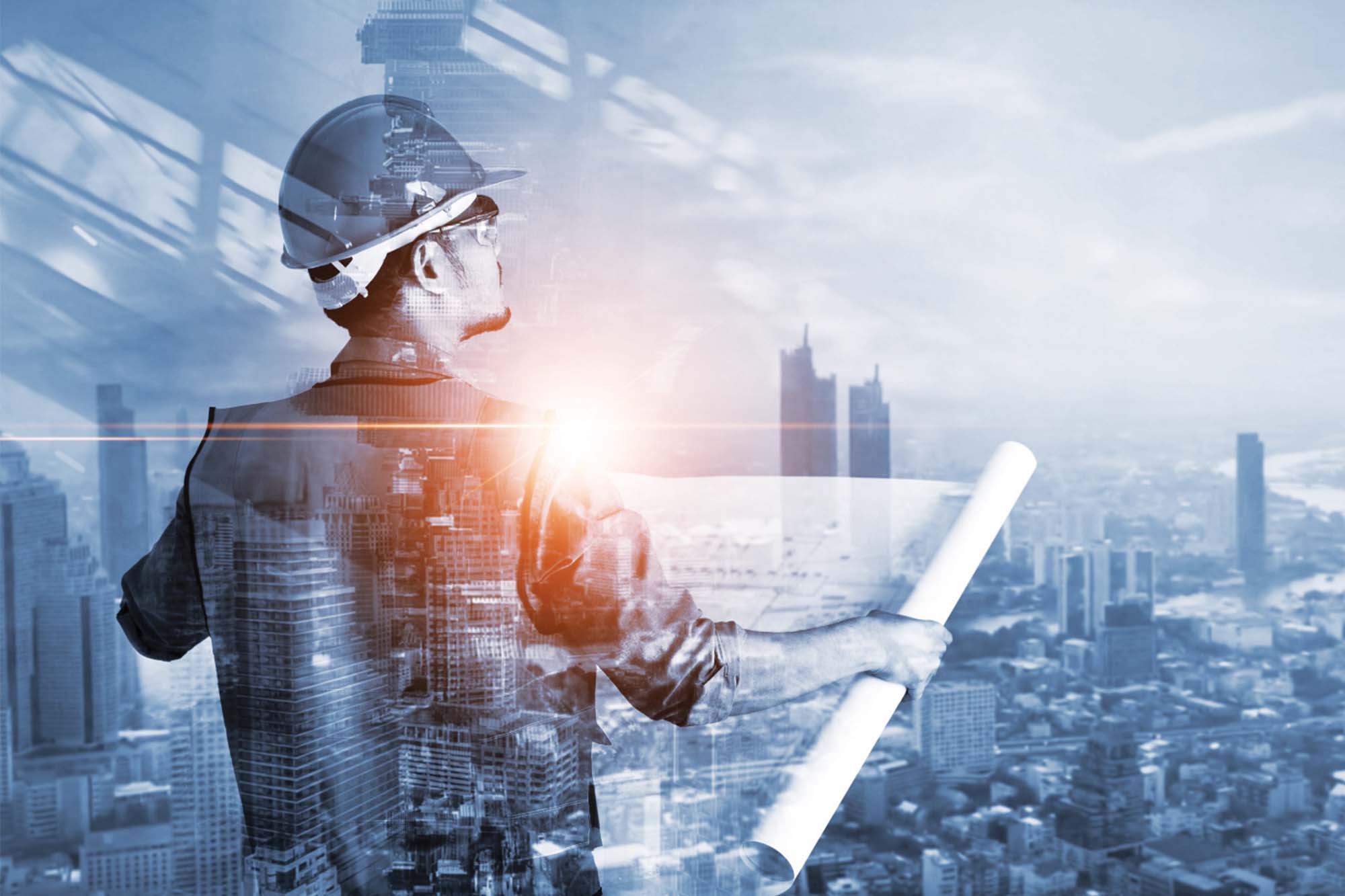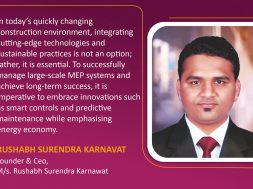Overcome MEP System challenges with AI

“In today’s quickly changing construction environment, integrating cutting-edge technologies and sustainable practices is not an option; rather, it is essential. To successfully manage large-scale MEP systems and achieve long-term success, it is imperative to embrace innovations such as smart controls and predictive maintenance while emphasising energy economy.” Rushabh Surendra Karnavat, Structural & Project Management Consultant, (Consulting Civil, Chartered and Government Approved Structural Engineers)
Maintaining MEP systems in large-scale projects leads to challenges such as the complexity of integration and coordination, effective preventive maintenance, ensuring energy efficiency, keeping pace with technological advancements, adhering to regulations, and managing costs. Using Building Management Systems (BMS) for monitoring and optimisation is essential to addressing these issues.
Also, planning and coordination are aided by building information modelling (BIM), frequent energy audits, and thorough preventative maintenance programs to maintain system efficiency. It’s also critical to keep up with technology developments, ensure regulations are followed, and use lifespan cost analysis in budgeting.
Innovative approaches to maintenance can greatly improve system performance.
IoT-based predictive maintenance and artificial intelligence (AI) provide early equipment failure detection, and BIM offers comprehensive 3D models for better planning. Energy Management Systems (EMS) optimise energy usage, while remote monitoring and management allow real-time oversight. Technologies like Augmented Reality (AR) provide specialists with real-time instruction, while laser scanning and 3D printing enable accurate measurements and quick part replacement.
Advanced filtration enhances air quality, automated maintenance scheduling simplifies maintenance tasks, and condition-based maintenance (CBM) concentrates on the state of the equipment. Energy efficiency optimisation calls for several tactics. Inefficiencies are found through energy audits and benchmarking, and HVAC optimisation, lighting enhancements, and insulation improvements increase total efficiency. Reducing usage even more is possible by integrating renewable energy sources like solar panels and installing energy recovery technologies.

Automation and smart controls can save a lot of money by adjusting systems in real-time using data. For instance, a commercial office building in Mumbai could achieve a 35 percent reduction in energy consumption with a five-year payback period by optimising HVAC, lighting, and integrating a BMS.
An integrated design approach is crucial for successfully integrating MEP systems with other building systems. Early stakeholder interaction and the use of BIM play a pivotal role in comprehensive planning, ensuring that all parties are included and integral to the project’s success. Real-time monitoring and control are facilitated via a centralised BMS, guaranteeing open communication by adopting interoperability standards. Automation and smart controls react to occupancy and environmental factors, while regular maintenance and effective energy management maintain efficiency.
A smart office complex in Bengaluru that integrated lighting, security, and HVAC systems under a single BMS to achieve a 35 percent energy reduction and LEED Platinum certification is a testament to the power of early stakeholder interaction in the design process. Reducing environmental impact requires building design to incorporate sustainability concepts. High-efficiency systems and intelligent controls can increase energy efficiency, and low-flow fixtures and greywater recycling are two ways to conserve water.
However, using sustainable materials is equally important in achieving sustainability, as it demonstrates a commitment to environmental conservation and responsible building practices. Integrating renewable energy sources, maintaining excellent indoor air quality through sophisticated filtration and appropriate ventilation, efficient waste management, and lifetime evaluation further enhance the environmental benefits. An eco-friendly office building in Pune, for example, achieved a 40 percent reduction in energy consumption, 45 percent water savings, and generated 25 percent of its energy needs from solar panels, leading to LEED Platinum certification and significant environmental gains.
Cookie Consent
We use cookies to personalize your experience. By continuing to visit this website you agree to our Terms & Conditions, Privacy Policy and Cookie Policy.










